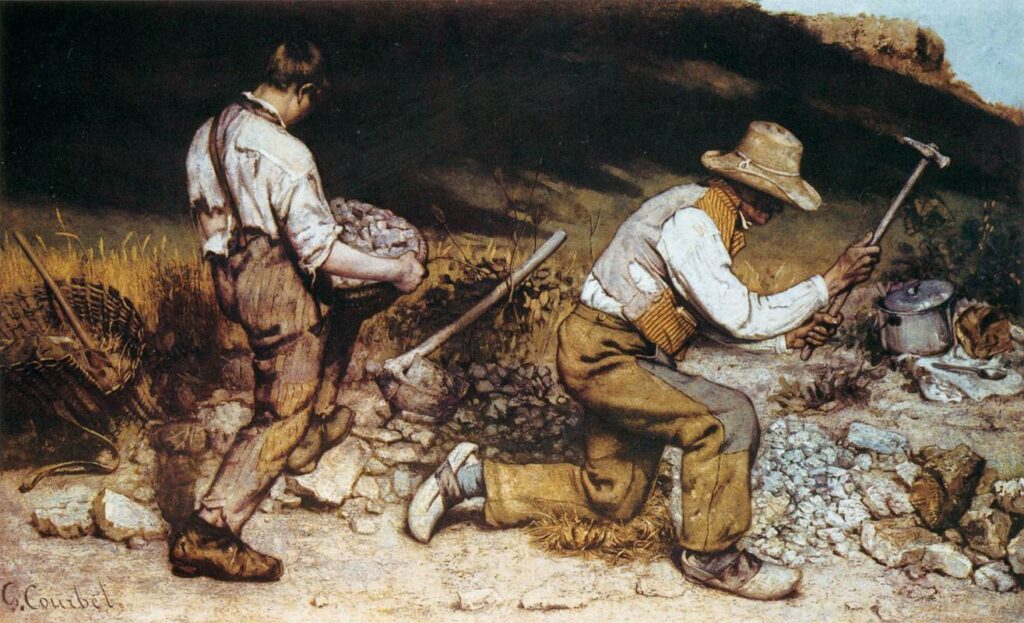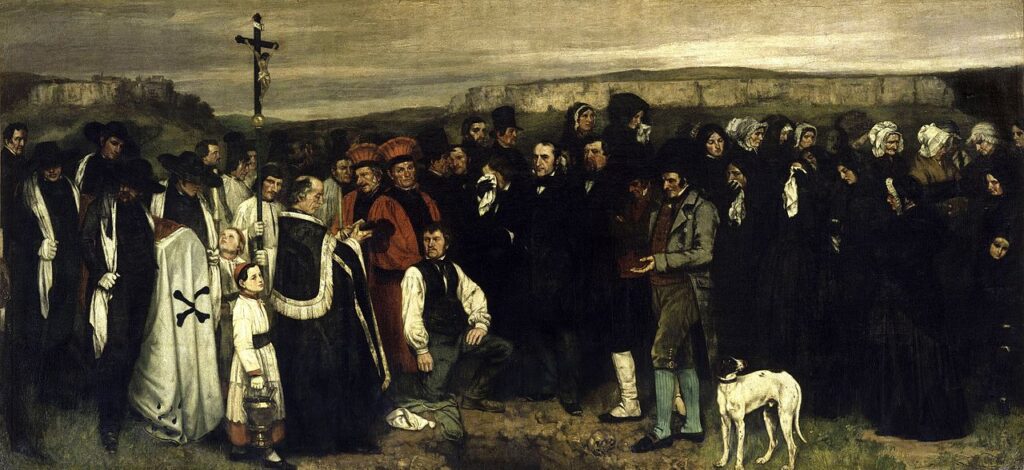Courbet used his newfound success to draw attention to the abject poverty of the French working class. In 1850 he encountered a group of laborers and invited them to his studio to pose for The Stone Breakers. Courbet was inspired by the democratic and socialist writers of his time and used his artistic fame to draw public attention to their cause. The Stone Breakers drew strong criticism for depicting working class subjects but it earned the respect of his peers. For the Salon of 1851, he painted a 10 foot by 22 foot depiction of a common burial in his hometown, entitled The Burial At Ornans. The piece was inspired by Romantic depictions of Catholic saints and Biblical figures. It was denounced for showing commoners realistically mourning in a format reserved for religious idols. But it garnered Courbet equal praise from his admirers and expanded his reputation as a progressive artist.


When a grand art exhibition was held in Paris in 1855, Courbet submitted fourteen paintings. However, three of them were denied from the exhibition because they were too big. Ever the dissident, Courbet constructed his own studio to display forty of his own paintings next door to the exhibition. He called this studio the Pavilion of Realism, after the word that his contemporaries used to describe his work. The centerpiece was the most ambitious painting of Courbet’s career, entitled The Artist’s Studio: A real allegory summing up seven years of my artistic and moral life. The center of the twelve foot by twenty foot canvas was a self portrait of Courbet working on a landscape, flanked by a nude model to his right and a small boy with a cat to his left. The figures on the right are his admirers and supporters while the figures to the left are oppressed and oppressors from all levels of society who inspired Courbet throughout his career.
